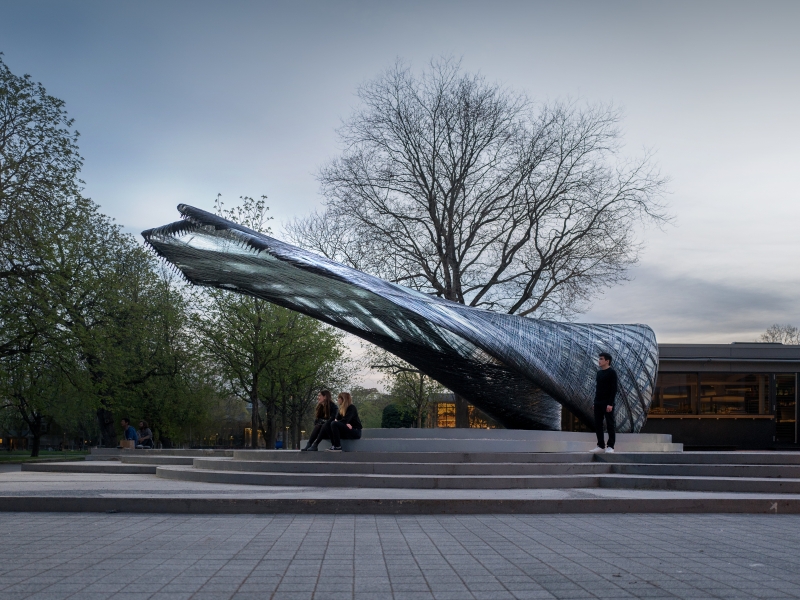
The Institute for Computational Design and Construction (ICD) and the Institute of Building Structures and Structural Design (ITKE) at the University of Stuttgart are currently researching a production process for structures based on 50k carbon fiber supplied by fiber specialist SGL.
The plan is to investigate the natural biological building of long span fiber composite structures such as the larvae of the apple leaf miner moth which spin cocoons on cherry and apple tree leaves using long threads of fiber. The researchers are now trying to apply this technique to the construction of building structures made of carbon or glass fiber reinforced composites and develop a new production process based for fiber composite constructions. As carbon fibers are lightweight and have a high tensile strength, a different approach becomes possible involving new production processes with multiple robot systems that communicate with each other, processing the fibers while handling high tension forces.
Scalable production
This approach enables a scalable production process for long span fiber composite constructions as they could be used in architectural design in the future, the researchers say.
’In this case, we use the glass fibers purely as a formwork on which we apply the carbon fibers,’ said Benjamin Felbrich, research assistant at the ICD. ‘Loads in parts subject to both tension and pressure are primarily transferred through the carbon fibers.’
An initial installation from the project can currently be seen on the University of Stuttgart’s inner courtyard, where 104 km of carbon fiber was provided and delivered from SGL’s Moses Lake site in Washington, USA.
This story is reprinted from material from SGL, with editorial changes made by Materials Today. The views expressed in this article do not necessarily represent those of Elsevier.




